How Much Do Poodles Weigh? [Weight Chart]
Poodles are great family dogs with many excellent qualities. They’re intelligent, curious, loyal, beautiful, and gentle in most cases.
They’re also known to bond well with their family members and get along with other breeds of dogs that you might have roaming around the house. Before you commit to buying a baby Poodle, though, you probably want to have a decent idea of how much they’ll weigh as adults.
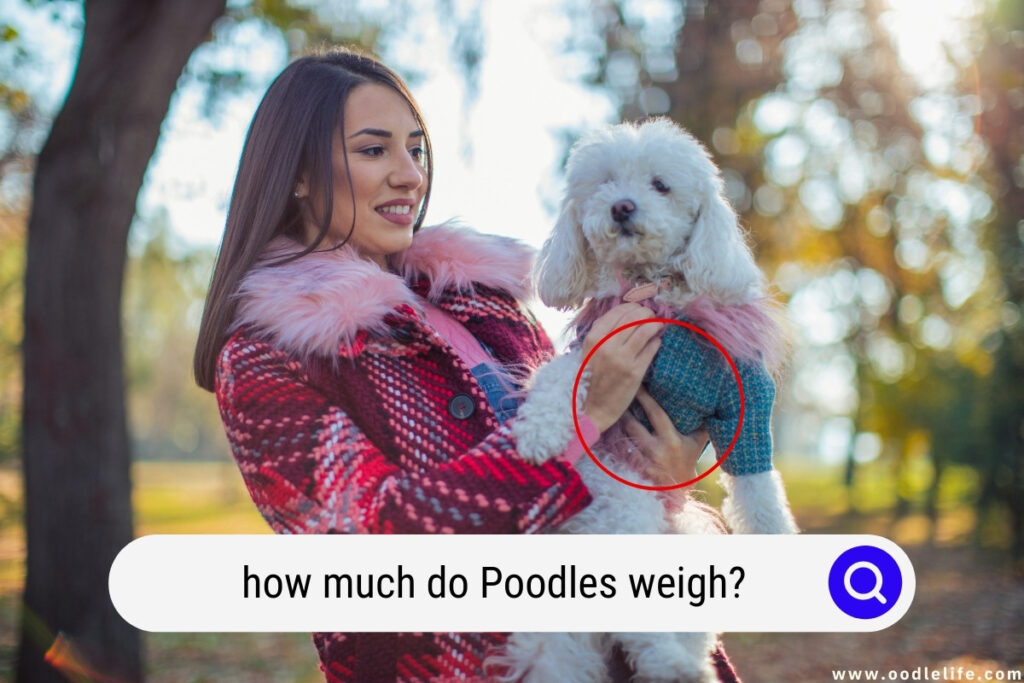
At first, all puppies are adorable and fun, but the responsibility grows as your pup matures into a full-grown dog. We’re going to look at how much Poodles weigh in this article, giving you some insight into what you can expect as yours grows up.
Let’s get started.
Growth to Expect from Male Poodles
You can expect your Poodle to skyrocket from roughly 5 to 25 pounds in the first few months. Poodles are rapid growers, and those who aren’t familiar with this species might be surprised at how big they start to get.
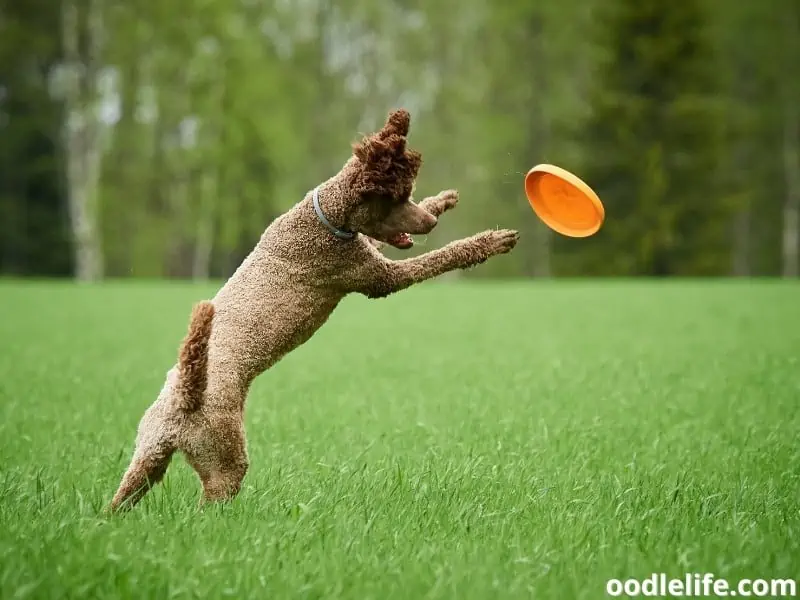
Over the next few months, your Poodle will continue to add 5-10 pounds per month. After ten months or so, you could find that your male Poodle ways anywhere from 50-70 pounds. That’s a typical Poodle’s growth cycle for the first year of its life, and it typically won’t get much bigger than 70 pounds at full maturity.
It’s also important to note that these numbers are general averages and might not reflect your particular animal. There are a lot of factors that could influence how big a Poodle gets, such as diet, genetics, environment, and more.
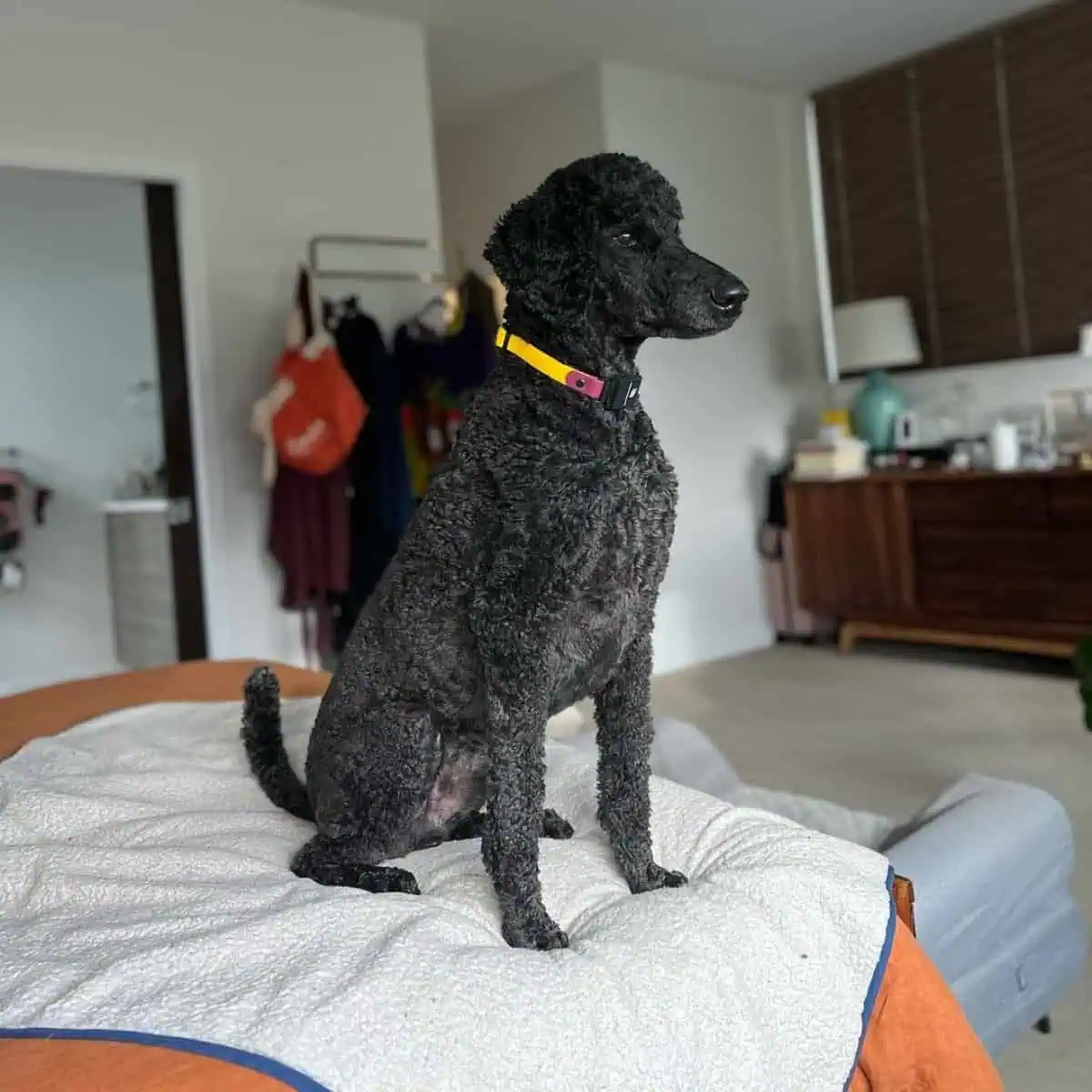
Whether you spay or neuter any animal will also significantly impact size. Fixing animals tends to skew their overall weight lower because of how the procedure affects hormones. Spaying and neutering is a responsible and healthy thing to do if you’re not breeding animals, and you can factor the reduction in size into your planning as well.
Female Poodle Growth
Female Poodles tend to be significantly smaller than male Poodles at maturity.

However, like the males, you can expect the size to grow from roughly 5 to 25 pounds in the first few mounts. At six months, your Poodle should be anywhere from 25-35 pounds. Growth starts to taper off for females at this point, and mature Poodle females reach a weight of roughly 40-50 pounds.
Again, these numbers might not apply to your particular animal.

It’s also important to remember that Poodles reach their full height about six months to one year before achieving mental and emotional maturity. So, while your excitable young Poodle might be large, they’ll be able to handle themselves a little better in a short amount of time if you train them well.
What About Other Types of Poodle?
The numbers discussed above referred to a Standard Poodle breed. These dogs were initially bred to be water-rescuing animals, and their fur allowed them to submerge in cold water without getting too cold. They were also significantly sized so they could be more helpful in life-or-death situations with humans.
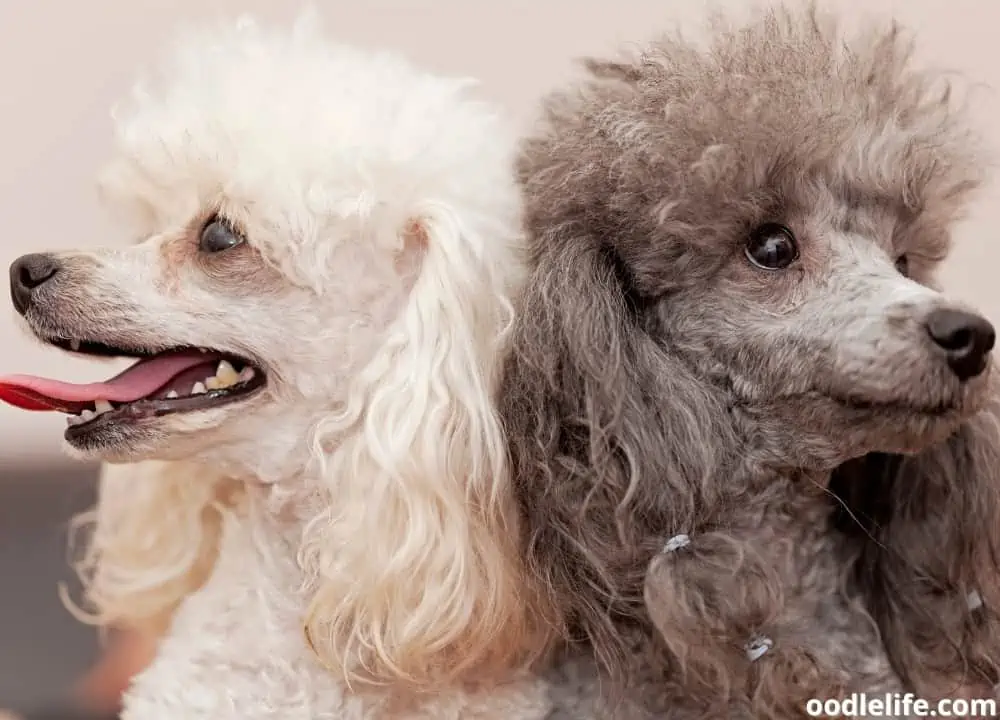
A Toy Poodle wouldn’t do too well trying to save someone, whereas a Standard Poodle could pull a significant amount of weight in the water.
Some Poodle hybrids get a lot bigger or smaller than the numbers listed above. For example, the Bernedoodle (Poodle and St. Bernard mix) reaches upwards of 150 pounds. There are myriad examples of Poodle mixes that range in size depending on the other breed in the equation.
Further, there are three standard types of Poodles. The “standard” Poodle is the largest of the bunch and will most likely adhere to the male and female numbers discussed above. The next breed is the Miniature Poodle.
Miniature Poodles aren’t that “miniature.” They weigh roughly 15 pounds, and they’re pretty sizeable. They fall into the category of “medium-sized” dogs and grow to full maturity after around 16 months.
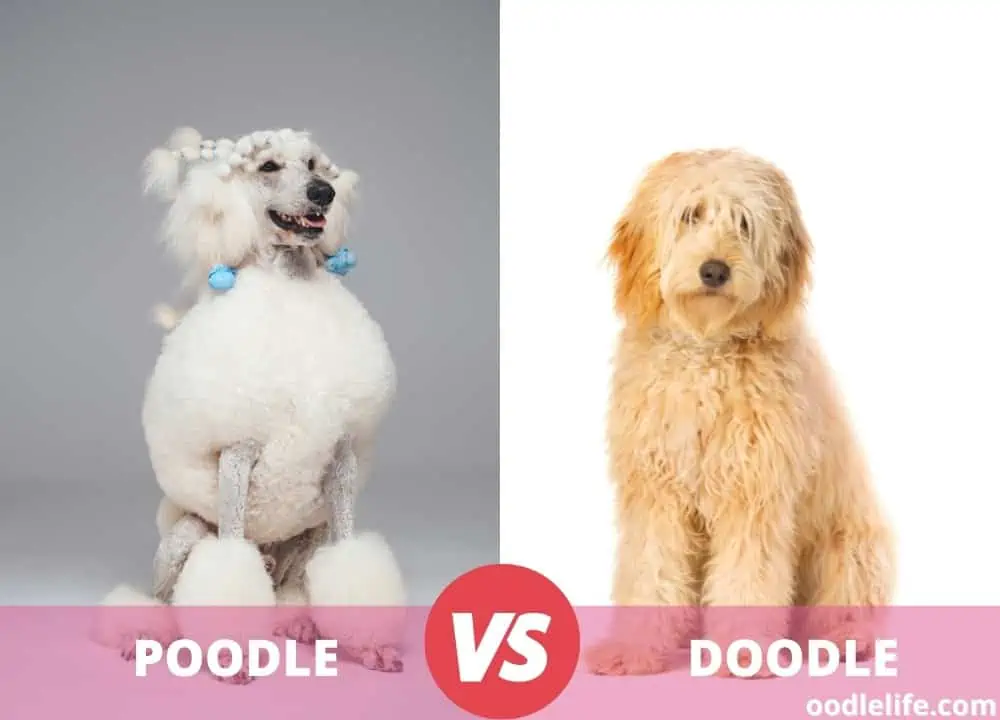
Sure, they’re miniature versions of the full-sized Poodle, but they’re comparable to many other dogs you’ll find. The next Poodle is called the “Toy Poodle.”
Toy Poodles are tiny. They grow to about 10 inches tall and lean on the smaller side of that figure. These Poodles are bred to be incredibly small and grow to full maturity in just under a year.
If they’re lucky, these little guys reach a staggering weight of just under 10 pounds.
Maintaining Your Poodle’s Healthy Weight
Poodles aren’t known to have extreme fluctuations in weight. An improper diet can shift the weight of any housepet, and a significant number of cats and dogs in the United States are considered obese.
The “cuteness” of having a chubby dog or cat is harmful in that it leads to significant health problems for the animal. So, it’s essential to keep an eye on your Poodle’s diet.
Paying attention to diet is particularly important for Poodles because they have an invisibility cloak. In other words, their fluffy, curly fur makes it difficult to tell when Poodles are gaining or losing weight. They could fluctuate ten or fifteen pounds without showing a sign if their coats are thick enough.
You can mix weight checks and grooming practices. Poodles require a lot of attention to their fur, as excess or unkempt hair can lead to eye irritation and other problems. Poodles didn’t evolve naturally to have coats they do, so the responsibility of maintenance falls upon owners.
It’s also important to keep a close relationship with your vet if you own a Poodle. Poodles are purebreds, so they’re far likelier to have genetic disorders and general health problems. Other breeds decrease those risks when they cross genes with others.
So, it’s vital to keep up with your veterinarian and ensure that your dog isn’t displaying new signs of any diseases or disorders common to Poodles. While you’re with your vet, you can discuss more ways of ensuring that your pup keeps a healthy weight throughout the lifecycle.